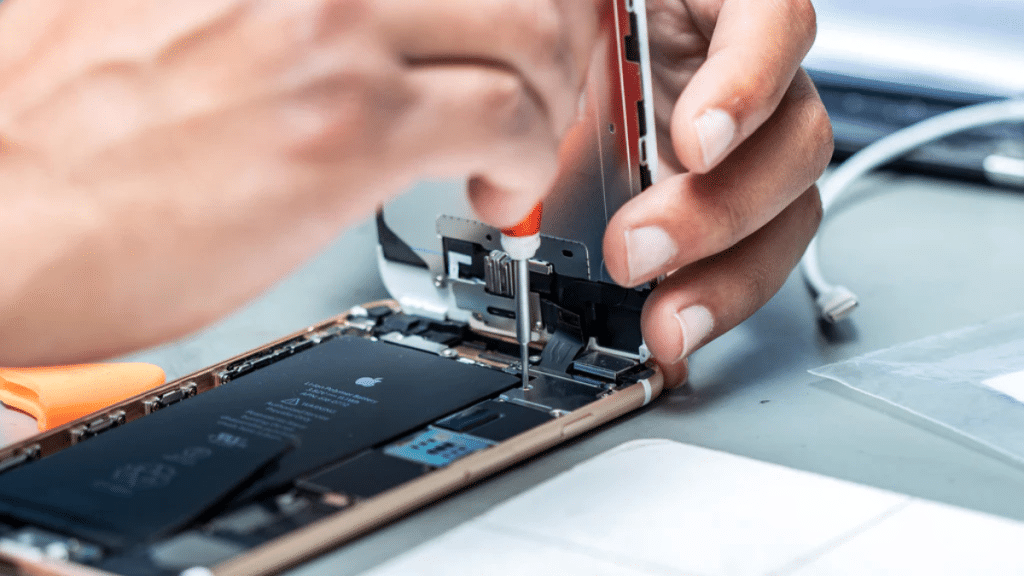Smartphones have become an essential part of our lives, serving not only as communication tools but also as devices for work, entertainment, and navigation. With such frequent use, it’s no surprise that screen damage is one of the most common issues users encounter. Whether it’s a slight crack or a completely unresponsive display, screen-related problems can quickly disrupt daily routines. This article explores the types of screen damage found in Pixel devices and how to address them effectively.
Types of Pixel Screen Damage
Screen damage isn’t always the same, and understanding the type of issue you’re facing can help determine the right solution.
Cracks and Shatters
One of the most visible forms of damage is cracking, which may range from hairline fractures to fully shattered glass. These usually occur due to accidental drops or impacts. While minor cracks might not affect functionality immediately, they can worsen over time.
Touchscreen Malfunctions
Sometimes, the damage goes beyond what the eye can see. A screen might appear intact but may not respond correctly to touch. This includes unresponsive areas, erratic touch behavior (known as “ghost touches”), or sluggish response times.
Display Issues
Dead pixels, color discoloration, backlight bleeding, or screen flickering are common display problems. These often point to deeper damage to the screen components beneath the glass, such as the digitizer or the display panel itself.
Common Causes of Screen Damage
Understanding what causes screen damage can help prevent future incidents.
- Accidental Drops: The most common culprit, especially when the device is not protected by a sturdy case.
- Pressure or Impact: Sitting on the phone or storing it in a tight pocket can apply pressure that damages the screen.
- Moisture Exposure: Even without submersion, water vapor or high humidity can affect the screen’s functionality.
- Thermal Stress: Sudden changes in temperature may lead to cracks or pixel failure.
How to Evaluate the Severity
It’s important to assess whether the damage is cosmetic or functional. Minor surface cracks might be tolerable for a time, but issues like touch malfunction or screen discoloration typically require immediate attention.
- Check for screen responsiveness by swiping across different areas.
- Look for visible lines, spots, or dark areas which might indicate internal damage.
- Test screen rotation and pressure sensitivity, as inconsistencies may signal deeper issues.
Repair Options for Pixel Screen Damage
When it comes to fixing a damaged screen, there are typically three main approaches:
1. DIY Repair Kits
These kits offer a cost-saving alternative for technically skilled users. They usually include tools and a replacement screen. However, improper handling can worsen the damage or void your warranty.
2. Professional Services
For those without technical expertise, seeking professional assistance is the safest route. Technicians can handle various levels of screen damage, from surface cracks to complete digitizer replacements. Many users opt for Google Pixel screen repair services through trusted local providers to ensure the job is done correctly.
3. Full Device Replacement
In cases of extensive internal damage or when repair costs approach the price of a new device, replacing the entire unit may be more practical.
Factors That Affect Repair Cost and Time
Several elements influence how much you’ll spend on a screen repair:
- Extent of the damage: A minor scratch is less expensive to fix than a shattered display with touch issues.
- Device model: Newer or high-end models tend to have more expensive parts.
- Parts availability: Third-party service providers may vary in stock and pricing.
- Labor charges: Costs can differ based on location and technician experience.
If you’re exploring cost-effective solutions, many third-party services offer competitive pricing for Google Pixel repair that doesn’t compromise on quality.
How to Prevent Screen Damage
While some accidents are unavoidable, you can take steps to reduce the risk of screen damage:
- Invest in a high-quality case and screen protector.
- Avoid keeping your phone in tight or risky environments, like back pockets or near liquids.
- Handle your phone with care, especially when multitasking or walking.
- Use storage solutions like padded compartments in bags or purses.
These precautions can significantly extend your screen’s life and reduce the need for repair.
Frequently Asked Questions (FAQs)
1. Can I use a cracked screen if it’s still functional?
Yes, but it’s not recommended. Cracks can worsen over time and might expose internal components to dust or moisture, leading to further damage.
2. How long does screen repair usually take?
Most professional repairs are completed within 1–3 hours. However, some services may require a day or more depending on part availability.
3. Is it safe to use a third-party repair service?
Yes, as long as the provider is reputable and experienced. Make sure to inquire about warranties on parts and labor.
4. What should I do if my screen is unresponsive but not visibly damaged?
This could indicate internal damage. Restart your device and check again. If the issue persists, consult a technician for a detailed assessment.
5. How much does a typical screen repair cost?
Costs vary, but basic repairs may start around $80–$150, depending on the model and service provider. More complex repairs may be higher.
Conclusion
Screen damage is an unfortunate yet common issue for smartphone users. By understanding the types, causes, and solutions, you can make informed decisions about how to address and prevent such problems. Whether you’re handling a minor crack or a full display failure, timely action and proper care can restore your device’s functionality and keep it running smoothly.
If you’re currently facing a screen issue, exploring your Google Pixel repair options early can help you avoid bigger problems down the line.

